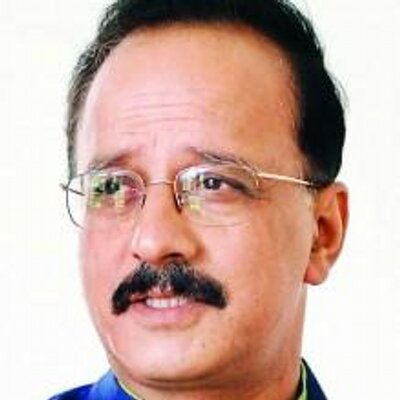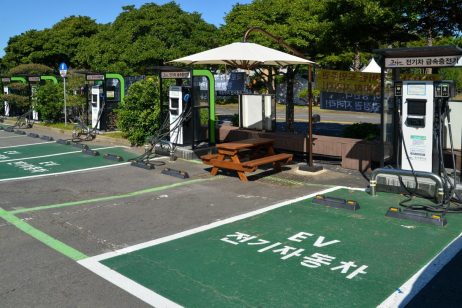When I recently read that the US Secretary of Commerce Howard Lutnick had very specifically asked India to open up its market for highly subsidized American farm produce, I am reminded of what a former Chief Economist of the World Bank, Nicholas Stern, during his travels in the country at that time, had succinctly remarked, something like this: “I agree it is a sin to provide the US farmers the kind of subsidies they get, but it will be a recipe for disaster if India does not open up.”
The same kind of hypocrisy has been exhibited time and again by successive US Secretaries of Agriculture, beginning with Ann Veneman (whose tenure during the times of George Bush Jr lasted from 2001 to 2005). Speaking at the International Food Policy Research Institute (IFPRI) in Washington DC, sometimes later, I recall how unabashedly she endorsed the World Bank Chief Economist’s not only ridiculous but stupid argument to force open Indian agriculture. In fact, there was a time when at least 14 agricultural commodity export groupings in the US had written to the US Trade Representative (USTR) seeking a cap on India’s product-specific support in the name of Minimum Support Price (MSP), so as open up the field for US exports to India.
I am therefore not surprised at the unwanted trade war that the US President Donald Trump has launched. It is very obvious what the US could not achieve from prolonged multilateral negotiations at the World Trade Organisation (WTO), Trump is now being wrongly advised by billionaires around him to force the developing countries into submission. With many major economies are now beginning to stand up in defiance, I don’t think India should give an impression as if it is ready to crawl, when it has only been asked to bend.
Let me narrate another story here. Some years back, a former US President Bill Clinton had remarked that the US would not trade with China because of its ‘bad’ human rights record. The next day I happen to switch on the BBC TV channel where a journalist was asking the then Chinese President: “How would you respond to the US President’s threat of stopping trade with China.” His reply was equally curt: “Trading with America. We haven’t traded with America for over 4,000 years, so how does it matter?” Following this statement, the next day the US business and industry were up in arms against its own President’s call for stopping trade with China. Bill Clinton eventually bowed before the domestic industry, and never again raked up the issue.
Returning back to the new tariff war in the offing, Trump may blast India for being the global ‘Tariff King’ when it comes to restricting the entry of American farm products (India imposes an average of about 39 per cent tariffs against 5 per cent by the US), the reality is that the tariffs India imposes are WTO-compliant. Based on the level of country’s development and the ‘special and differential treatment’ spelled out in trade books, let it be known that at no stage has India violated the WTO norms. India’s relatively higher tariffs are based on the enshrined trade principles and are not driven by whims and fancies of one person.
On the other hand, it is the massive subsidies that the US provides for agriculture are actually the problem. So much so that writing in the Financial Times (July 21, 2006), the then EU Trade Commissioner, Peter Mandelson, clearly stated that developing countries say they are prepared to import more US farm goods but not US farm subsidies. He quoted the then Commerce Minister of India, Kamal Nath, who had said: “We don’t mind competing with American farmers but we cannot take on the US Treasury.”
Over the years, the US has only strengthened the protective fortress it has built around its highly subsidized agriculture. As per the Economic Research Service of the US Department of Agriculture, payments made under the direct government agriculture programme to farmers and ranchers is expected to go up to $ 42.4 billion in 2025, against the earlier projection for 2024 at $ 9.3 billion. On a per farmer basis, the US farmer pays an equivalent of Rs 26.8 lakh per annuum.
Take the specific example of cotton, which has remained a contentious issue in the WTO negotiations. With an average area under cotton at 624.7 hectares, and with just 8,103 cotton farmers in 2021 (India had 98.01 lakh farmers engaged in cotton cultivation), the US has been providing monumental subsidies. A calculation by the New Delhi-based Centre for WTO Studies, had shown an annual support of $117,494 in 2021 compared with only $27 that the Indian cotton farmers was getting.
Let’s also look at the product-specific support the US and EU provide while working out the Aggregate Measure of Support (AMS). Very cleverly, during the trade negotiations, the rich and developed countries, had managed to ensure that against a 10 per cent de-minimus limit for the developing countries, the rich countries are able to distribute the ceiling amount (of a maximum limit of 5 per cent) among a handful of products of high commercial value. Take the case of cotton for example. While the EU had provided a subsidy support of 139 per cent for cotton in 2006, the US had provided 74 per cent higher support in 2001 for cotton over and above the limit for developed countries.
Lower tariffs for agricultural imports are simply to show that US agriculture is an open market. But a careful perusal shows that US has imposed over 9,000 non-tariff barriers (against 600 by India) to restrict imports. While Trump says US will match tariffs by tariffs, India too has ample space to use matching NTBs to protect its own agriculture.
Instead of asking India to set its house in order, the need is to ask the US to open up its agriculture. This can only happen if the US is asked to first dismantle the fortress around its highly subsidized agriculture.
Source link : View Article
Author
-

Dr. Devinder Sharma is a distinguished food and trade policy analyst. An award-winning Indian journalist, writer, thinker, and researcher, well-known and respected for his views on food and trade policy. Trained as an agricultural scientist (he holds a Master’s in Plant Breeding & Genetics), Sharma has been with the Indian Express, amongst the largest selling English language dailies in India. Then, he quit active journalism to research policy issues concerning sustainable agriculture, biodiversity and intellectual property rights, environment and development, food security and poverty, biotechnology and hunger, and the implications of the free trade paradigm for developing countries.



